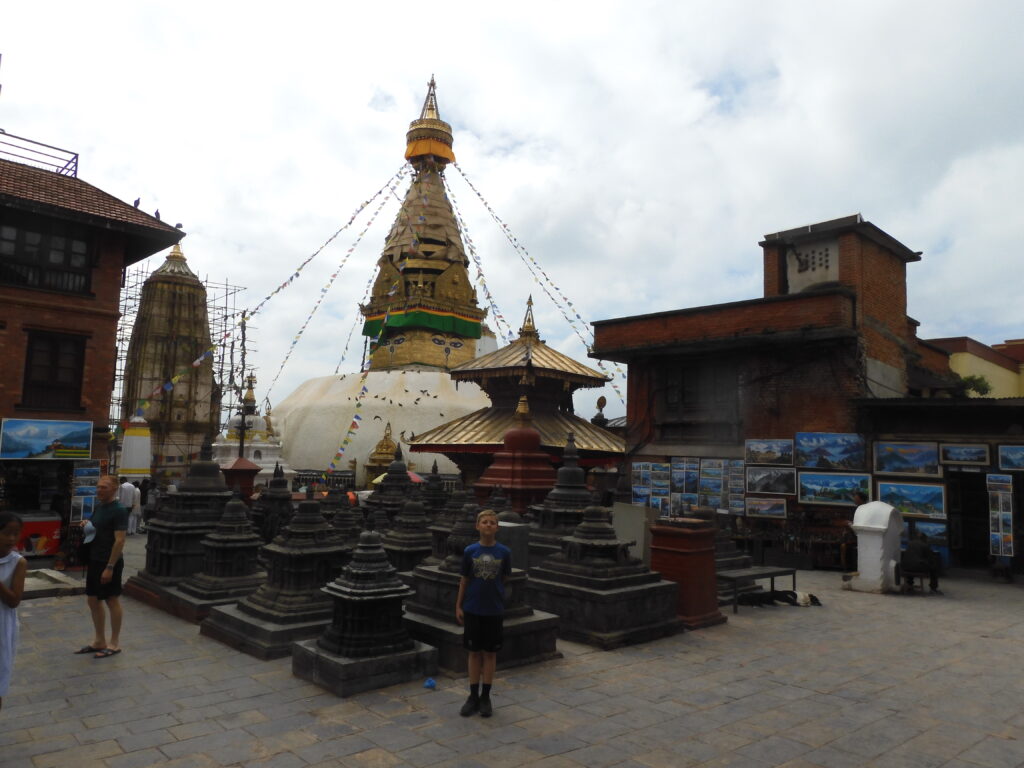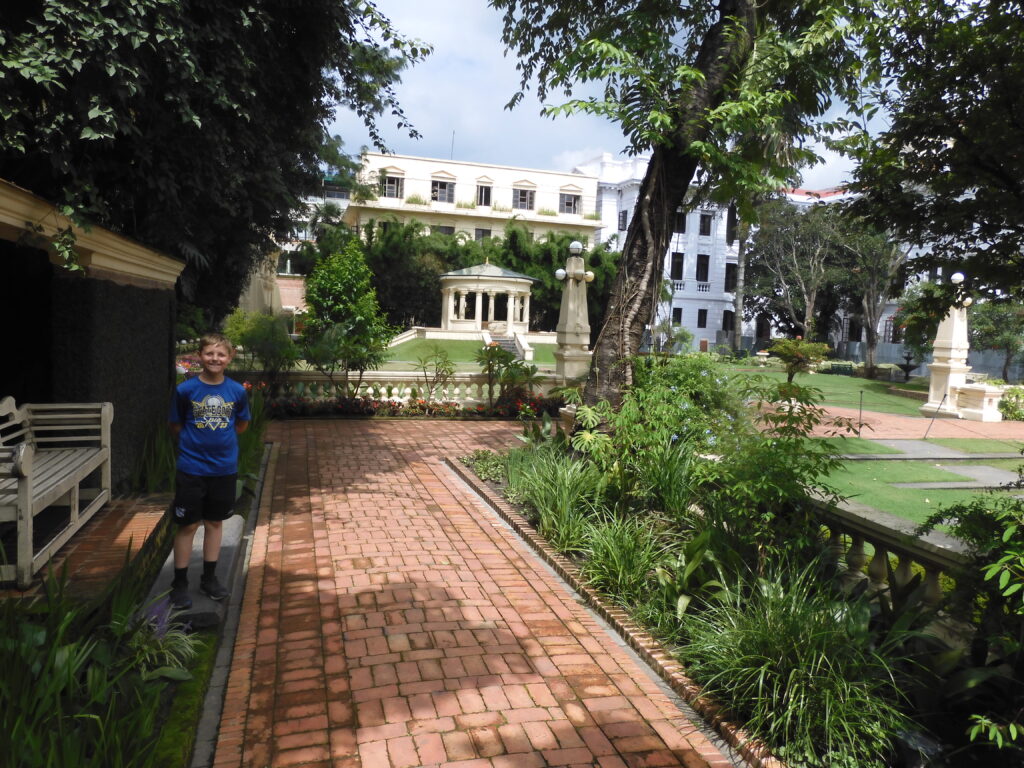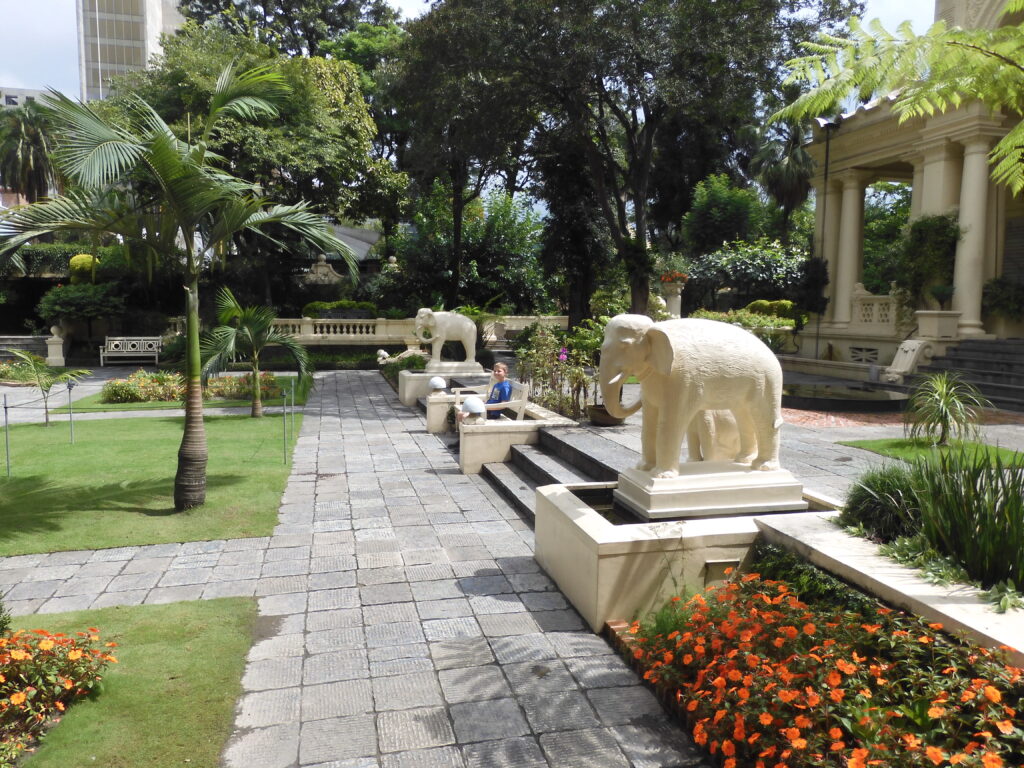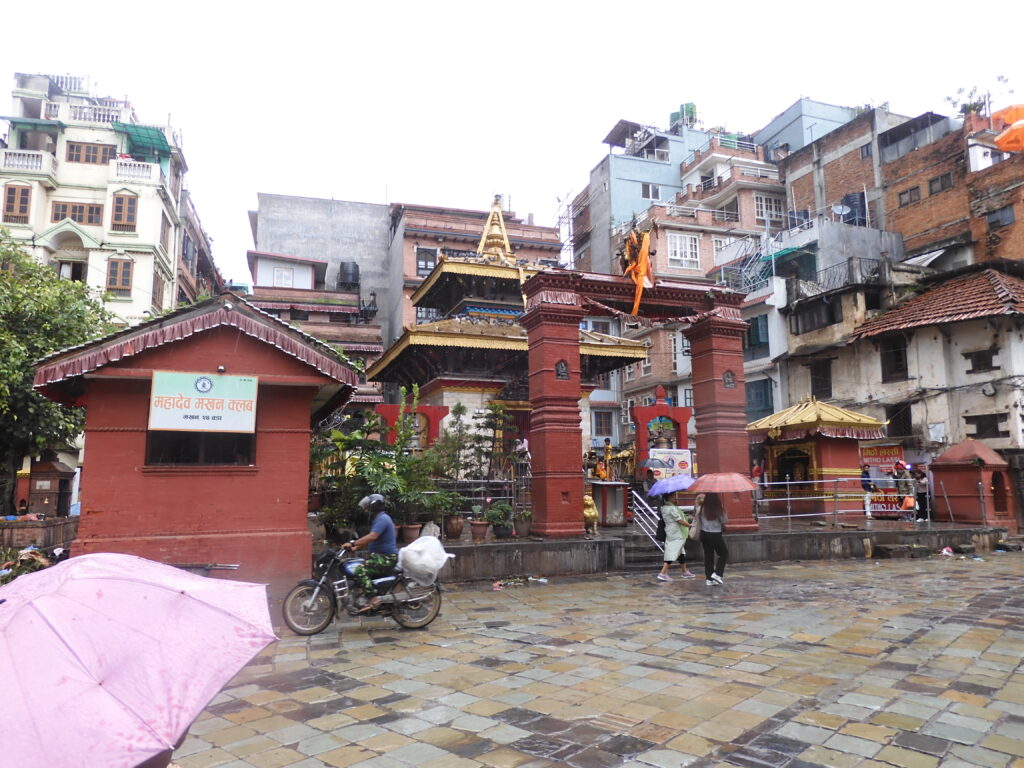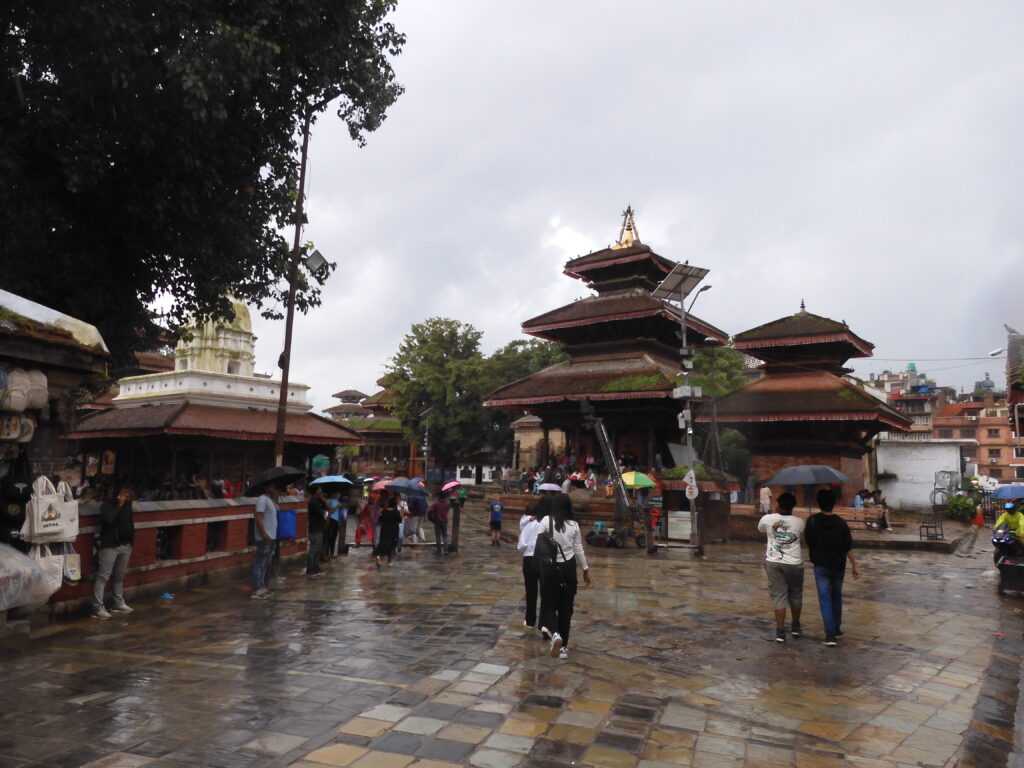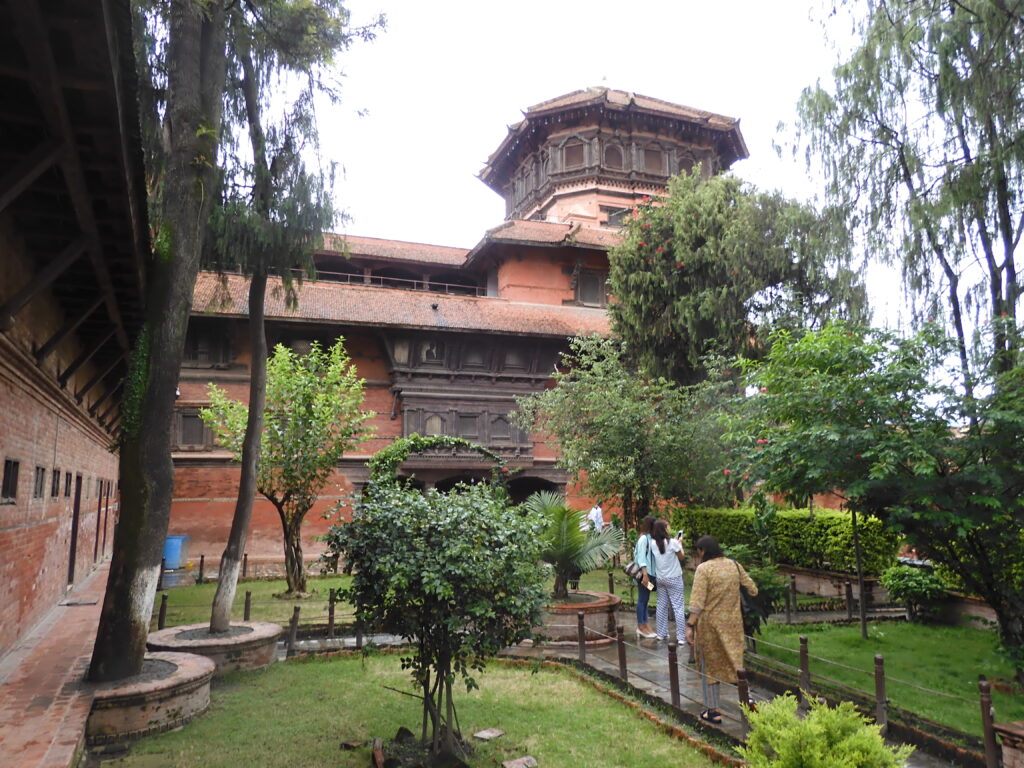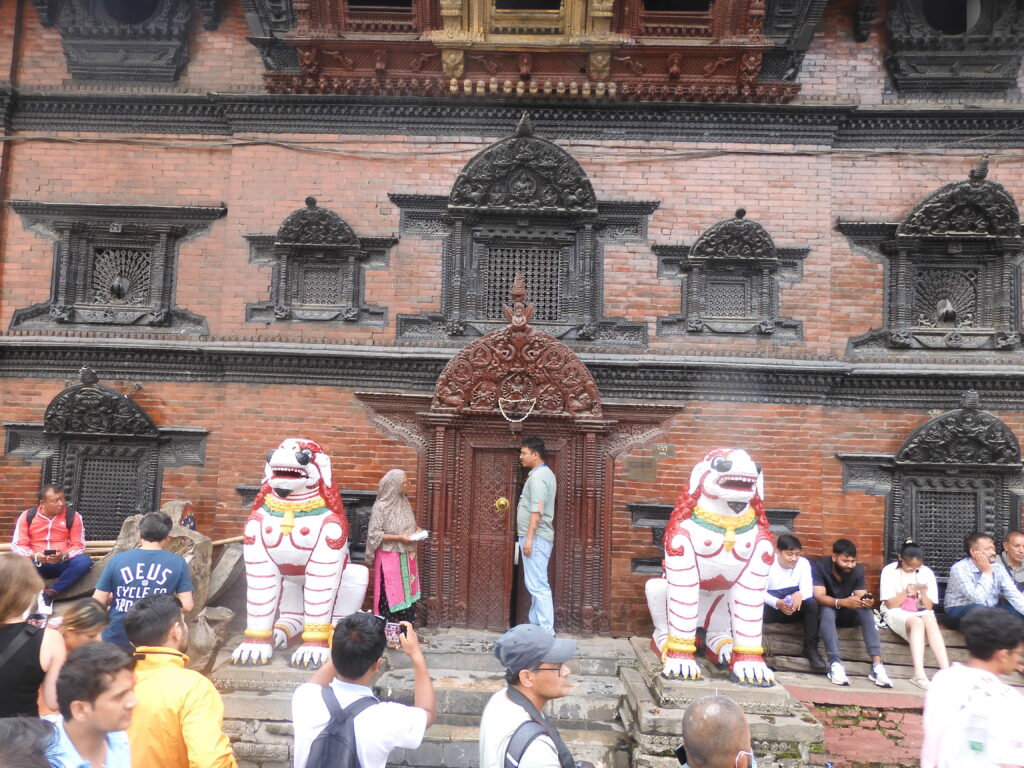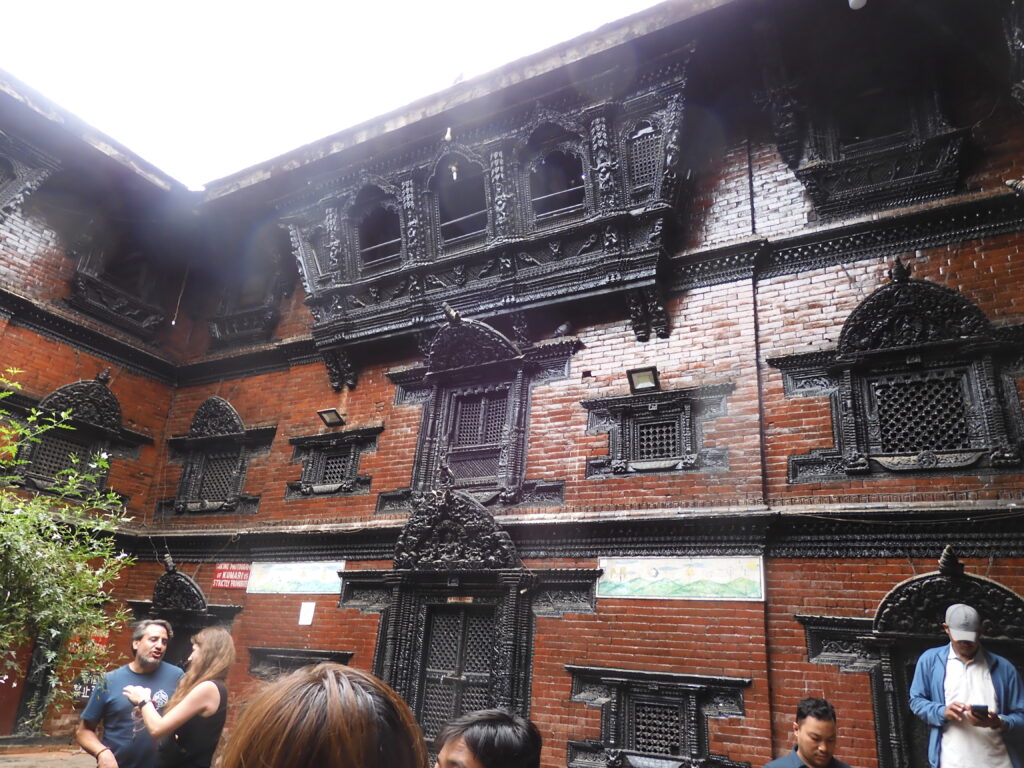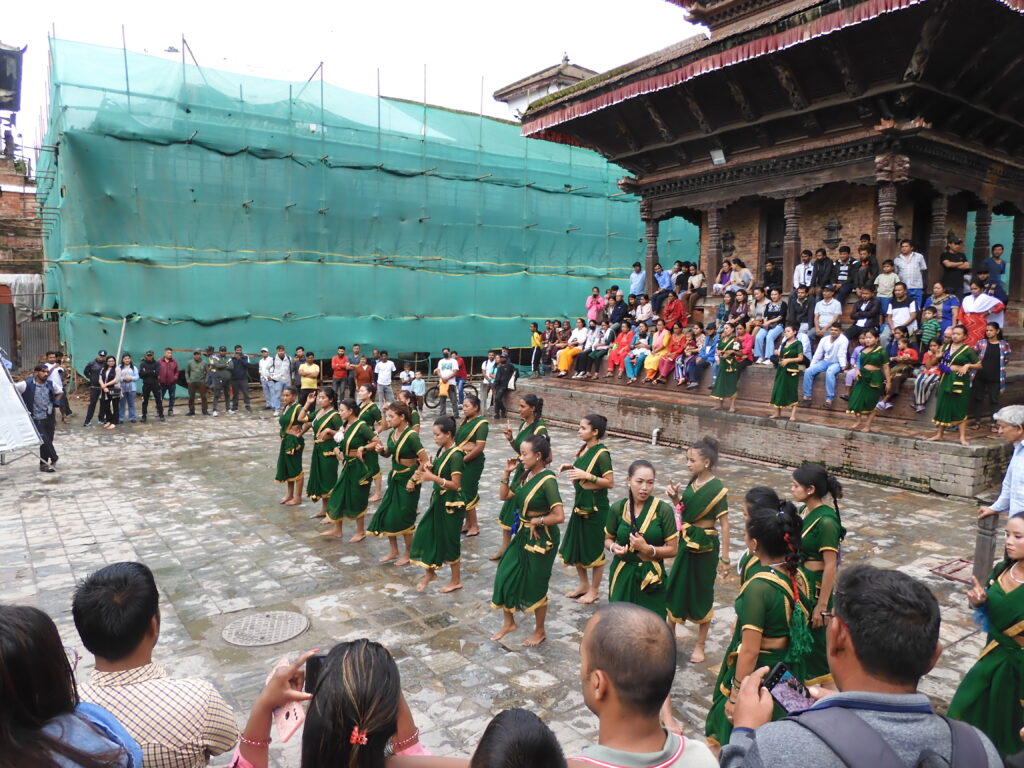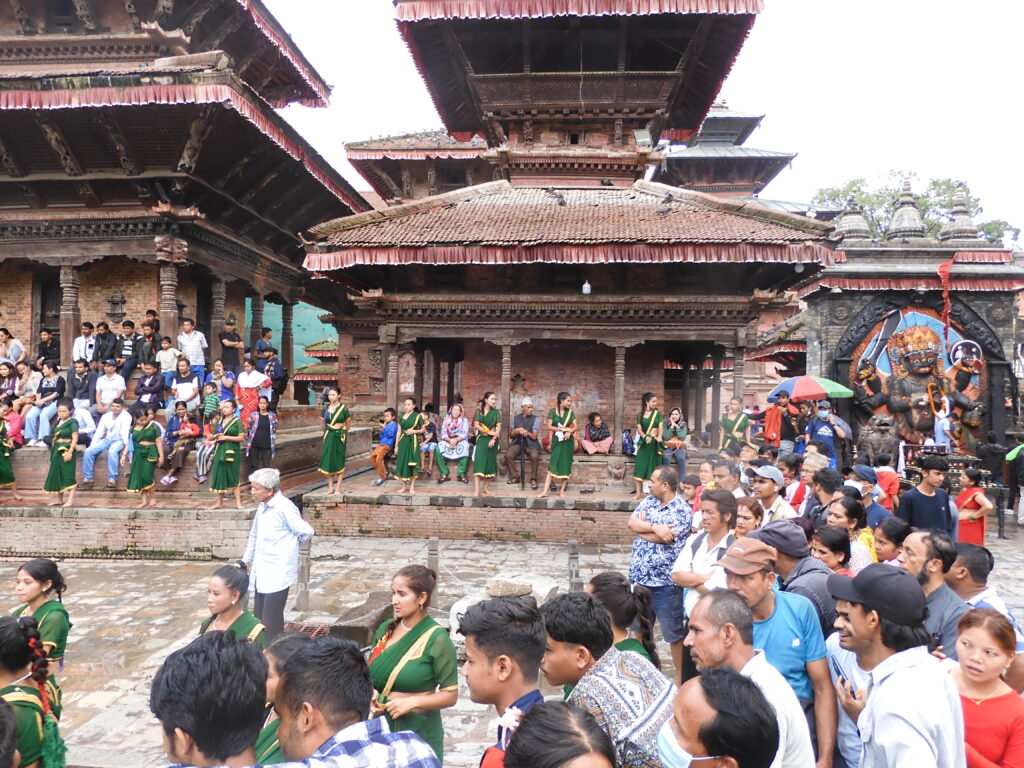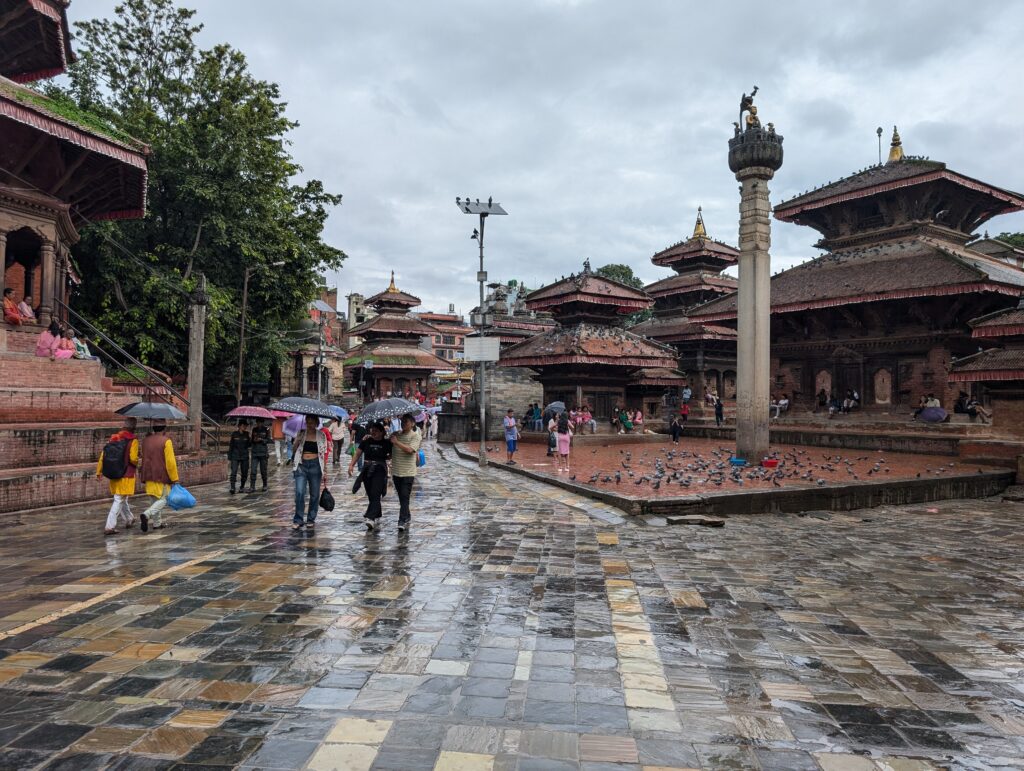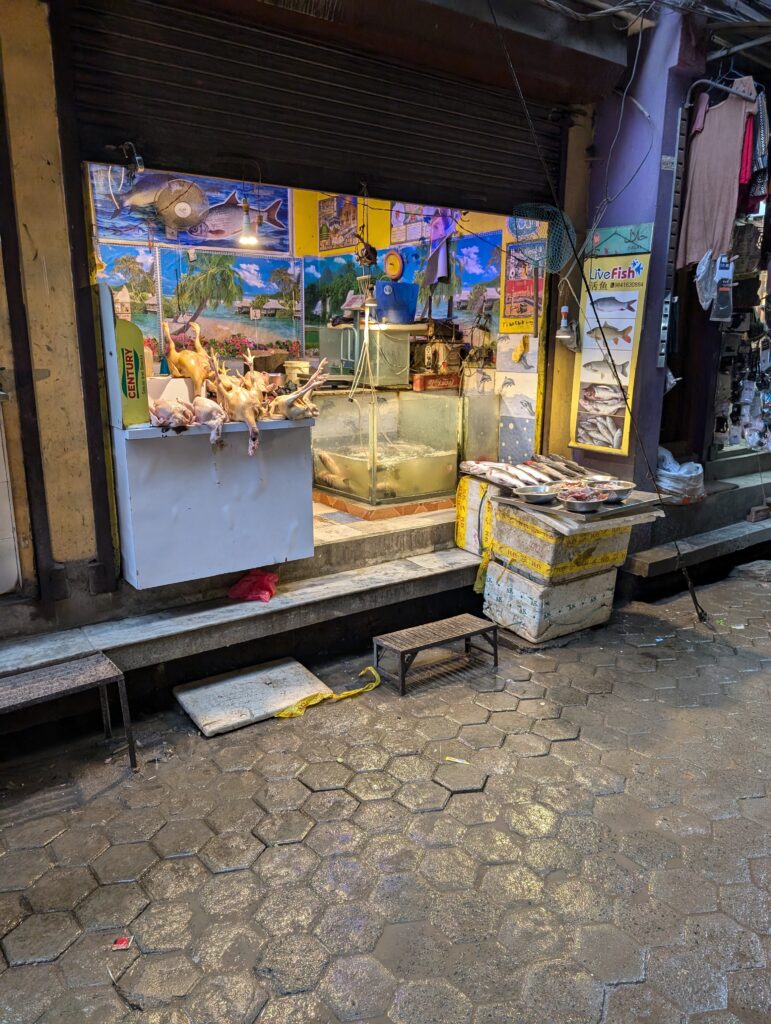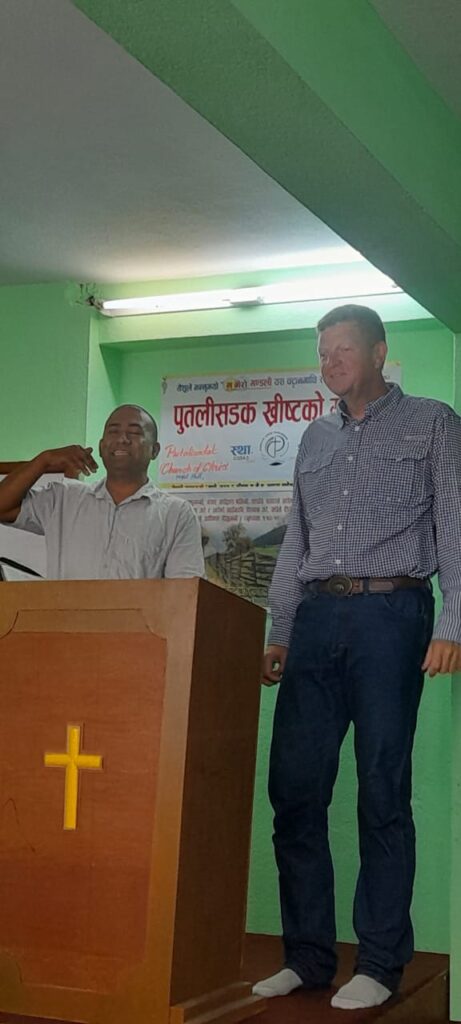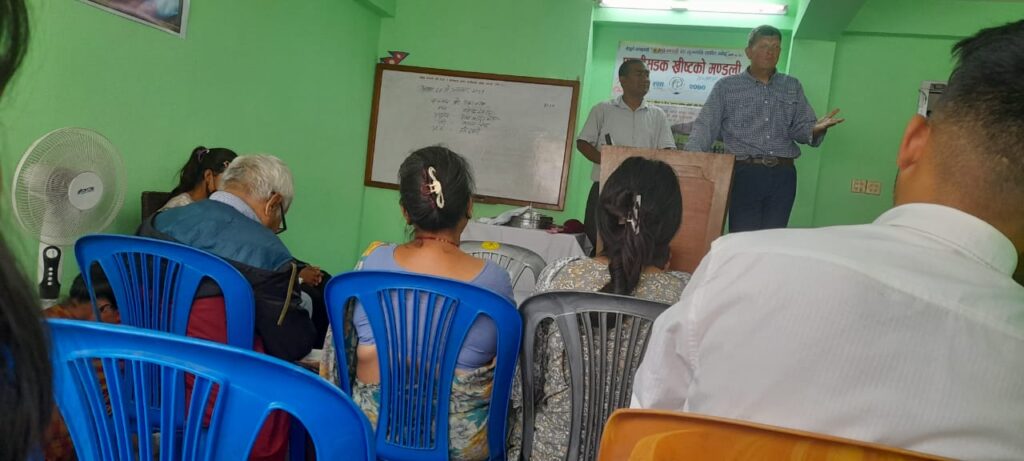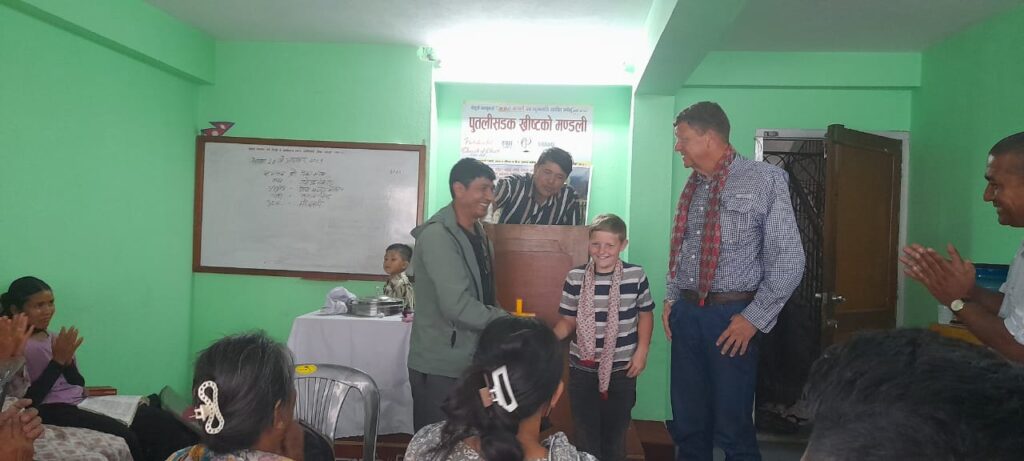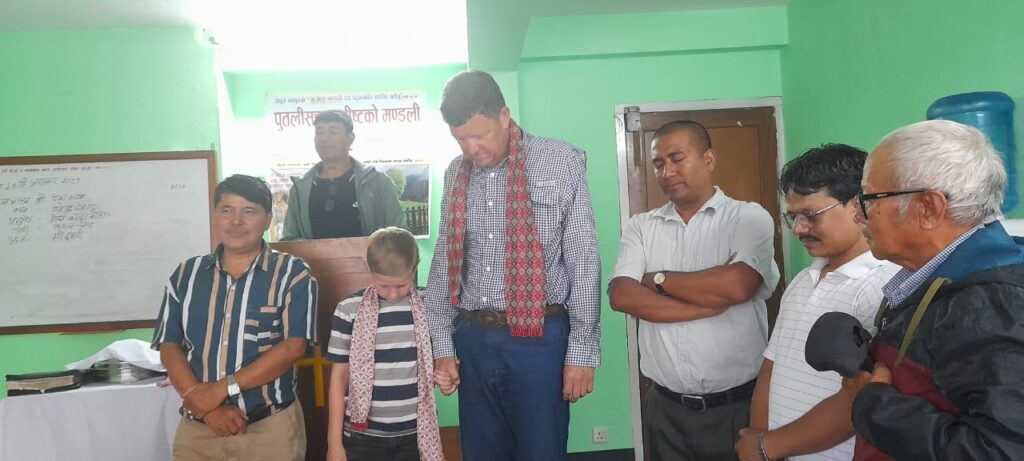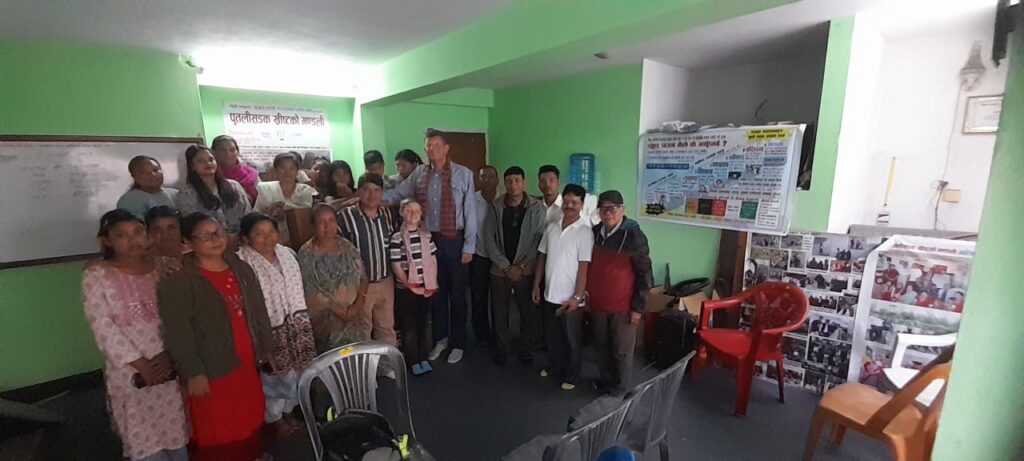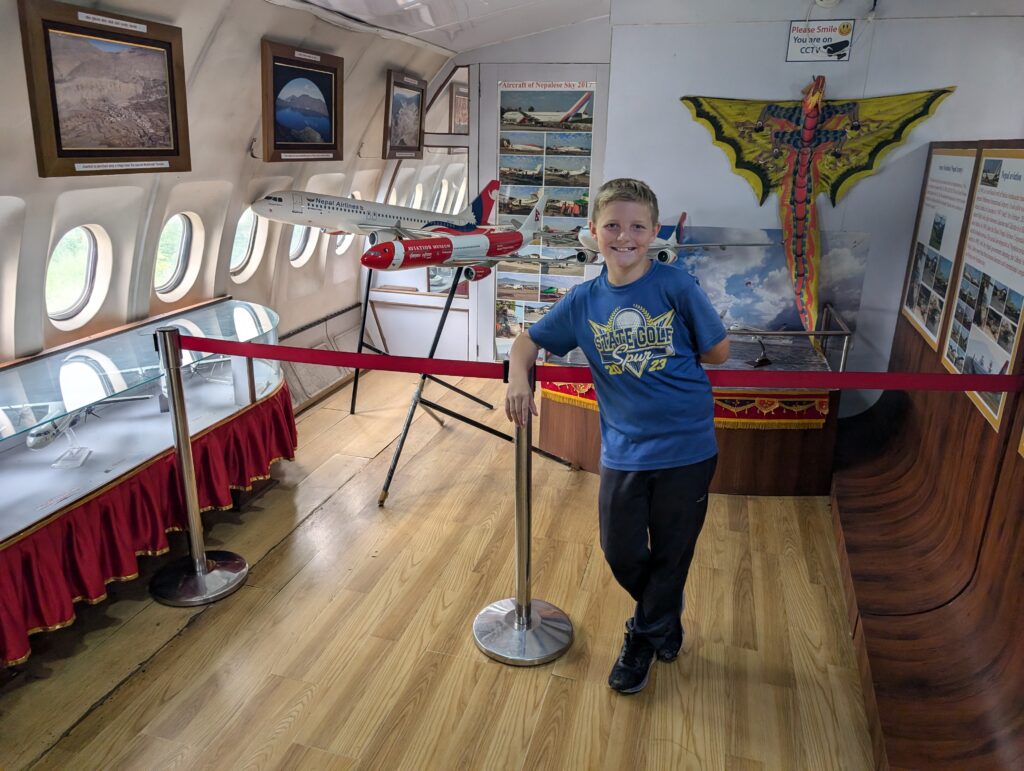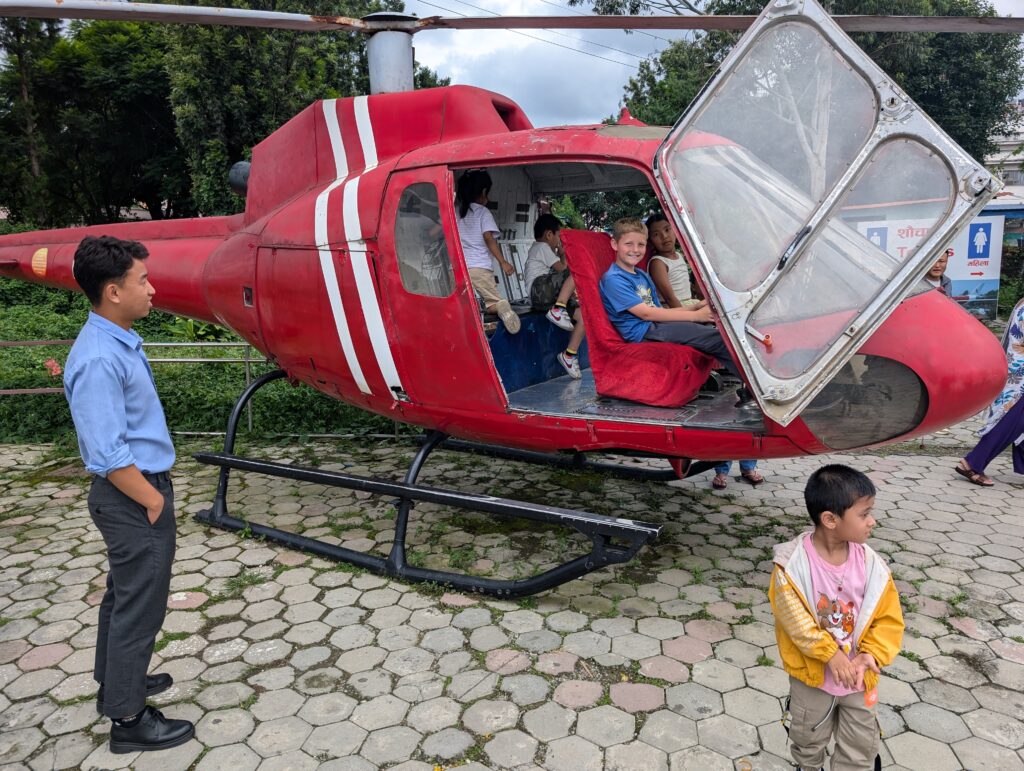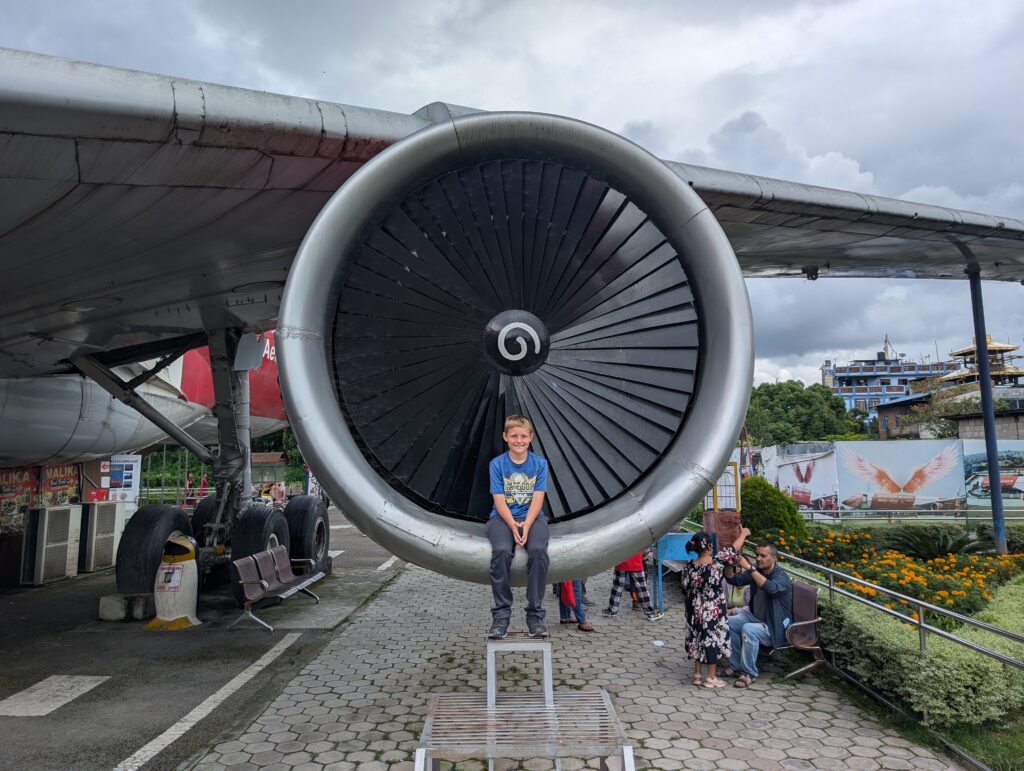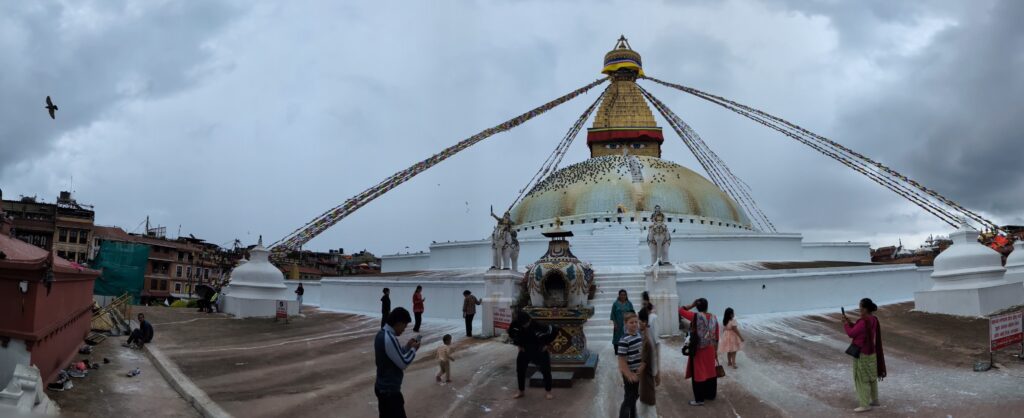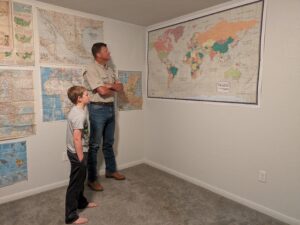Kathmandu
A Hate - Love Relationship
As Stephanie points out to me occasionally – when she is annoyed with me – there is a meaningful difference between being annoyed and being mad. There are many minor annoyances to put up with as we travel. There are cultural differences, people trying to exploit you for what you don’t know, a missed connection or unexpected delay, differing views on the importance of lines; that sort of thing. The day we went to Kathmandu, I got mad. We had a 200 kilometer bus trip from Pokhara to Kathmandu. Buses left for Kathmandu every half hour from the tourist bus stop in Pokhara in the early part of the day. It was a good thing we caught one of the first ones. We just missed the 7:00 bus, but were able to leave on the 7:30 departure. This trip, which may have taken an hour and a half in Texas, took over twelve that day in Nepal. The roads were muddy as usual. Several times we stopped inexplicably for half an hour or more as a long line of buses and cars passed us seemingly on the same route. Other buses allowed passengers off on these stops. Our driver barricaded us in as he left for who knows where. Sometimes we were confined to the bus for over four hours without a stop. It was a comfortable bus, but there was no bathroom. That was a problem. The roads were jammed with cars and in horrible condition the whole way.
As we approached Kathmandu in the dark during a steady, moderate rain shower, the driver pulled over in a muddy lot and hollered, “Last stop!” We were nowhere near the bus station. Of course, there was a herd of taxis there – probably all of the driver’s cousins – willing to “rescue” us from this manufactured crisis for only about the cost of an additional bus ticket. Had we made it to the actual bus station, our hotel would have been within easy walking distance. As it was, we were stranded several kilometers away. I asked the driver for an explanation. All of a sudden, he spoke no English, and only grunted out again, “Last stop!” The rest of the passengers placidly got off the bus, postulating that maybe because of the “rush hour traffic” (at 8:00 p.m.), buses didn’t enter the city. I could not see how the miserable traffic was any more of an impediment to bus travel than it had been throughout the rest of the day. I demanded to be taken to the bus station. I wasn’t going to get anywhere as the lone plaintiff, however. The bus driver and his assistant just smirked and closed the door in my face. I gave the side of the bus a swift kick as they drove off, and in my anger determined not to pay the thieving taxi driver friends one red cent to drive me home. I was just going to walk. It was wet and muddy anyway, so what was the difference? The taxi drivers all of a sudden were very nice.
“Five hundred rupees!” (which was still more than the going rate for a trip of that distance).
“I can walk.”
“Three hundred rupees!”
“Nope,” I snipped and started off toward the motel.
“Two hundred rupees?” That amounted to $1.50. I still didn’t want to do it, just on principle. But it had been a very long day. Maybe it was worth a buck fifty to avoid carrying baggage for several kilometers through the rain, mud, and darkness. I accepted and we got in. Twenty minutes later, we pulled up at the motel and got our bags out. As we stood there in the rain, the cabbie thrust a calculator under my nose with the number 500 typed in, as if he could not speak any English and understood this to have been the agreed upon rate.
“You told me 200 rupees!” I griped.
“That each, you two people.”
Knowing it was just a scam and ignoring the blatant, intentional math error, I just threw the five hundred rupee note in the car, as I let him know that all Nepali taxi drivers were thieves, and commenting that perhaps the entire country was a country of thieves. I guess if I had two 100 rupee notes in my pocket, I could have just given him two hundred and put the onus on him to figure out how to extract the rest, but I didn’t, and I was pretty sure he “wouldn’t have change, sorry!” So I let him go, and accepted being scammed for the 300 (or 500 depending on how you looked at it) rupees. Try as I might to keep a good attitude about it, I have to admit that I did allow this kind of behavior to cloud my experience in Nepal. Once again, the scams were all for a couple of dollars, but it was the principle of the thing. I would have probably tipped him the difference, had he just not been so overtly opportunistic and deceptive. But he got his money anyway, so I don’t think he cared. It only ruined my day, not his. On the other hand, that day for me had been ruined long before, anyway. But, in the words of Scarlett O’Hara, “Tomorrow is another day.”
Brother Gajendra, who had helped put us in contact with churches in Nepal, let us know that there would be a Bible study in Kathmandu on Thursday at 12:00 and invited us to attend. I probably needed that refocus. I was again asked to preach, but this time I had a day’s notice and was armed with a repertoire of a few sermons thanks to Stephanie’s previous help. I happily accepted. The timing was a bit inconvenient for sightseeing, but Caleb and I were able to find a couple of stops in the same general direction from our hotel as the place the church met. We hiked to the Pashupatinath Temple and explored it after eating breakfast, and then made our way back to the church’s meeting site, on the second story of a building above an Indian restaurant.
Pashupatinath is a Hindu temple complex spreading out over a whole section of land. There are records of a temple having been at this site at least as far back as A.D. 400. The place had been renovated a couple of times, including one major operation in the 12th century, but the history goes way back. As with many of the Hindu and Buddhist sites we visited, there was a lot going on there. There are over 500 different shrines in the complex. Only Hindus were allowed in the main temple, but the site was so large there was plenty for us to see. There was something that resembled a fair going on outside, with music and dancing. There were people selling things everywhere. Insistent locals tried to force guide services on us, speaking over the ticket taker who was trying to tell us the instructions and layout. He mocked us when we tried to explain to the ticket taker that “this guy wasn’t with us.” There were cremations going on. There was piped in music coming in on speakers. There were multiple smaller worship services going on at different shrines. It was a little overwhelming, especially for someone who isn’t well versed in Hinduism. Perhaps I should have hired a guide, but it wasn’t going to be that guy. Besides, we had to leave after about an hour on site to have time to walk back to Bible Study.
(Continued)

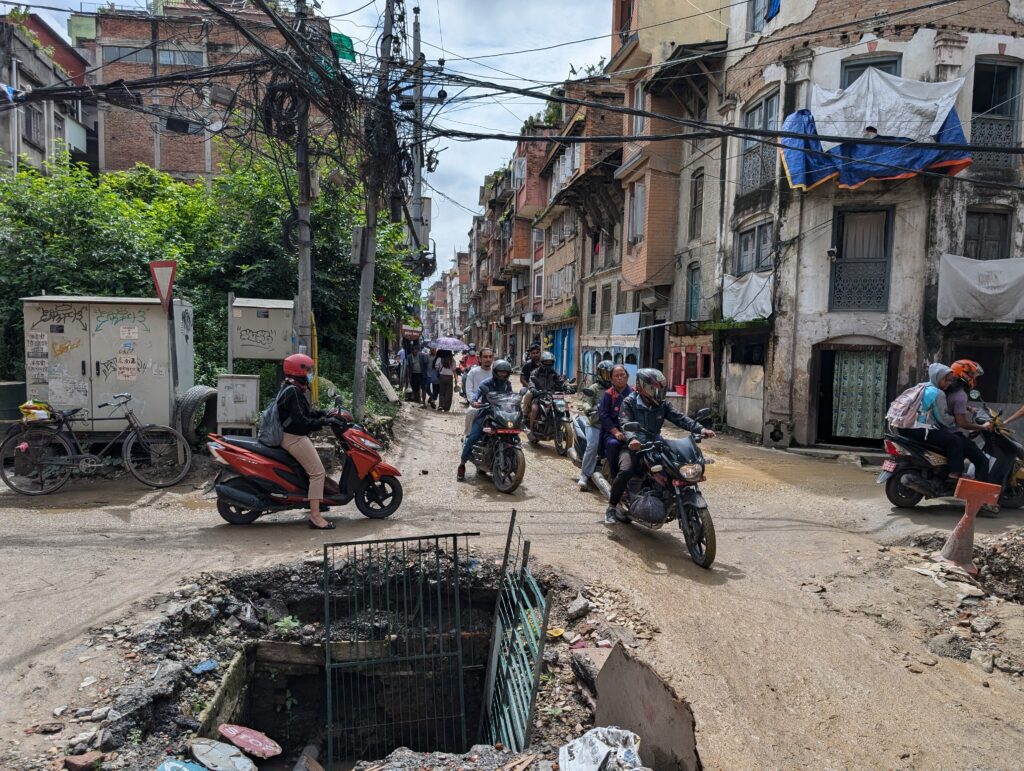
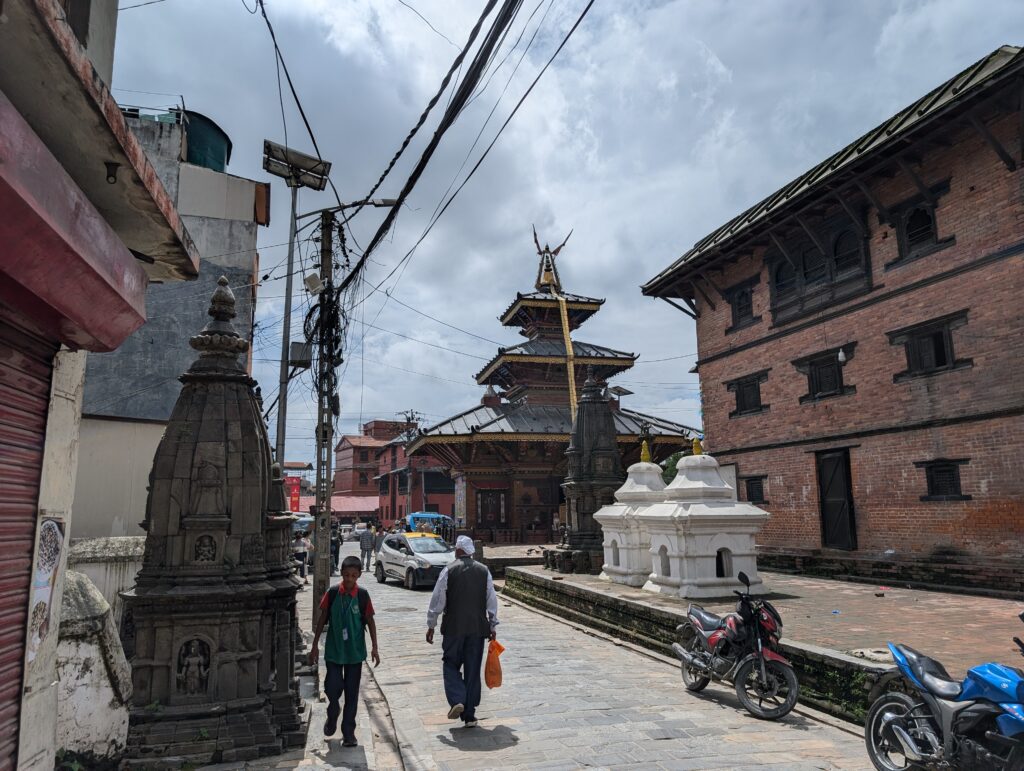
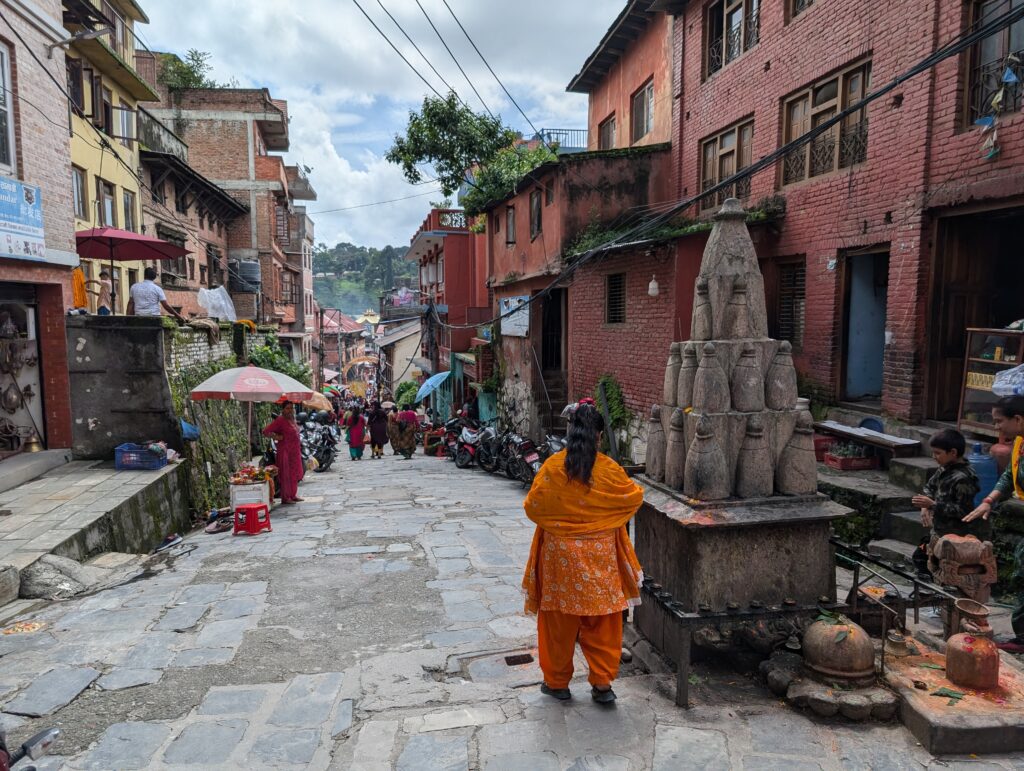
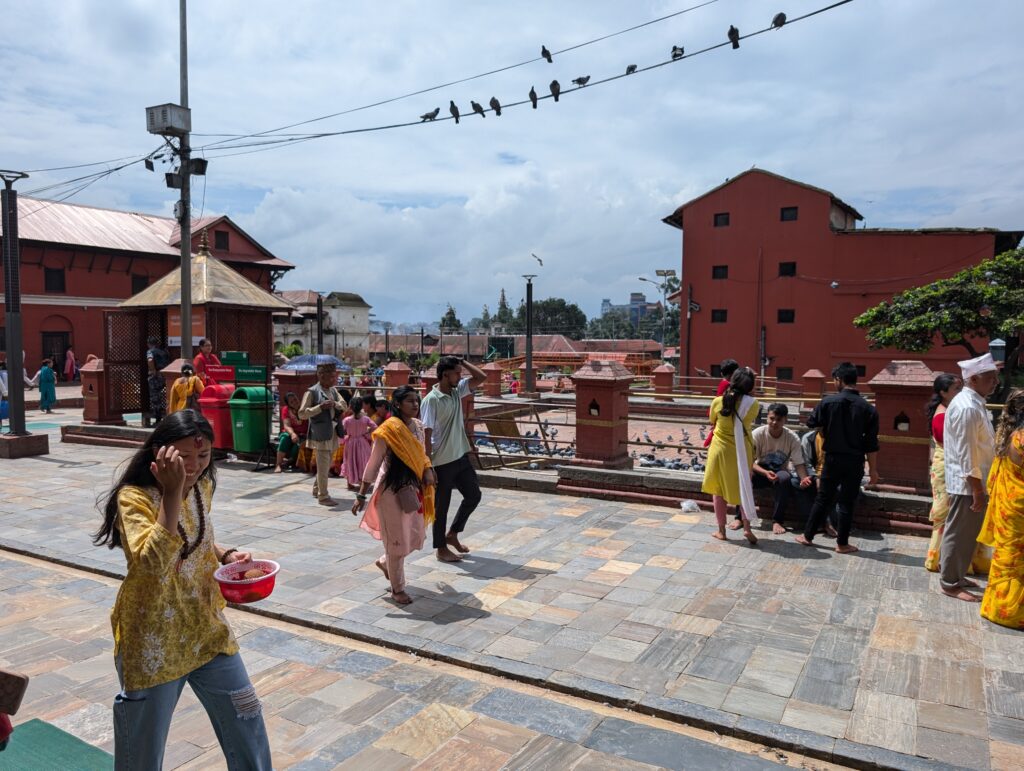
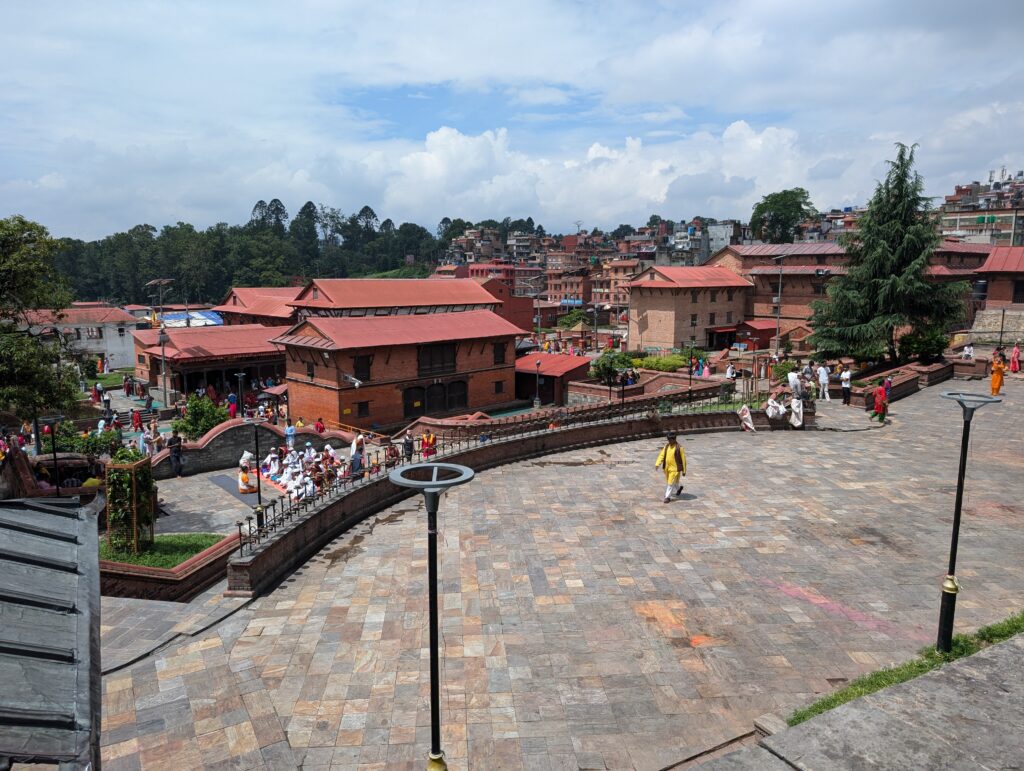
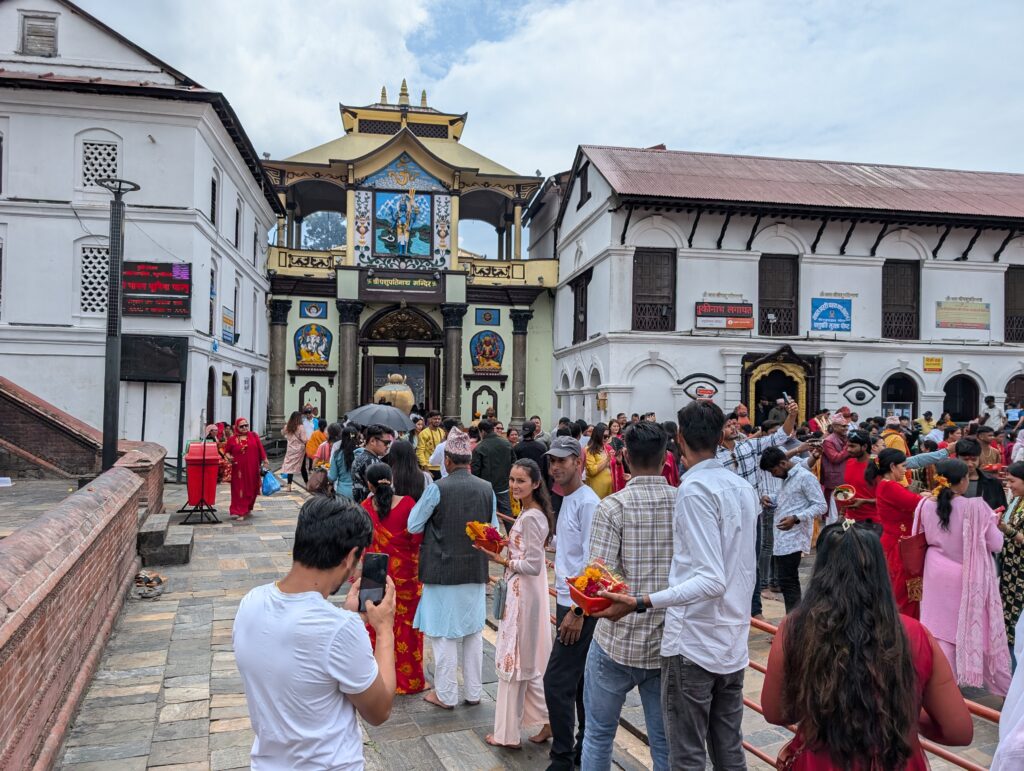

We headed back toward the Tandoori restaurant and met Gajendra who let us in the building. We had plenty of seating, though no air conditioner. There were enough English speakers we could have conversations with a number of folks, and the sermon delivery and translation went much more smoothly. It was a very nice interaction. I learned a lot about the preaching school associated with Bear Valley that used to operate near Kathmandu. I learned about the several congregations spread around the valley. I was invited to come back when I could. Of course, I didn’t have an idea of when I might be back, but certainly I would be happy to return when I was back in the country.
One of my sisters there in the church overheard me lamenting some of my experiences with taxi drivers. She arranged my ride to our next temple on a ride app called “In-Drive” that apparently stands in for Uber in Nepal, the exception being that you pay in cash and that the default seeks first to summon motorbike drivers if you don’t reset the vehicle type. She and Gajendra were doubtful that I could use InDrive without a Nepali phone number, but as soon as I saw how easy InDrive worked, I immediately downloaded it and set it up on my phone. I never had to haggle another cab ride the rest of my time in Nepal. This improved my mood and enjoyment of Nepal exponentially. Our sojourn with the church in Kathmandu concluded with a simple but tasty local meal with a kind of flattened dry rice overlaid by spicy pea soup and the occasional chicken bite.
Our InDrive cab hauled us out to Bouddhanath, the principal Buddhist Temple in Kathmandu. It has a 36 meter high stupa, making it one of the largest stupas in the world. It is a rather plain building in comparison to many of the other temples we saw, and while the area is surrounded by vendors on every side, the temple itself didn’t have vendors inside. The temple was believed to have been built in the 5th century and renovated in the 8th century. The building is very large, but the complex itself is much smaller than Pashupantinath. A rain began to fall while we were there, clearing out the already relatively modest crowd. By the time we walked over and around the site a couple of times, we were ready to head back to our room and go find some supper.
Friday was our main sightseeing day in Kathmandu. Caleb was tired from getting up early the previous few days, and so slept in pretty late. We availed ourselves of the free motel breakfast before departing for the Monkey Temple. We decided to see it first, as the rain had cleared. It was high on a mountain. I figured this was our best chance to see some Himalaya views. Additionally, the remainder of the sites we wanted to visit were all within walking distance of our hotel. We had no luck viewing the mountains, but this was the most enjoyable temple we visited. As you can ascertain from the name, this temple is crawling with macaque monkeys. Caleb found these to be more interesting than the aspects of the temple.
The temple itself was interesting. Again, there was a lot going on. There were dozens of different shrines. Surprisingly, this temple is important to both Hindus and Buddhists. I don’t really understand that, but it is so. There were several monasteries on site. The whole complex had commanding views of the city and the valley which were worth the cost of the cab to get to the site in and of themselves. There were monks chanting and monkeys playing on the shrines. There were stray dogs running around, sometimes fighting. There were strings of prayer flags running seemingly every which way. Sometimes the monkeys swing around and slid up and down the strings of prayer flags as if they were vines. We spent more time at this interesting temple than we had at the others.
We caught one last cab back to the Garden of Dreams before making our way around Thamel (our area of Kathmandu) to the remaining sights on our list. The Garden of Dreams is on the edge of this neighborhood. It was a neo-classical garden designed by a German fellow. It kind of feels out of place in Kathmandu, and wasn’t really all that impressive compared to the other exotic things we saw in the city. The closest landmark to the garden was the Narayanhiti Palace, so that’s where we went next.
Nepal had continued as a monarchy long past when most other powers had dispensed with such traditional systems. They had, however, deposed their own king in the early part of the 21st century. He had been an heir and descendant of the old Shahs. The country suffered from sporadic protests over the years. There were often talks about the monarchy surrendering points of control, but they would always slow roll any changes and fought against making any real concessions. There was a massive assassination attempt in 2001 that, while unsuccessful in achieving regicide, did kill and injure many members of the royal family. There were some concessions made at this point, but the die was cast. The royal family was on the way out, finally abdicating in 2008. The palace we visited was the official state royal residence from the 19th century to the end of the monarchy. It was subsequently made a museum.
The royal residence was a mansion, for sure, but it definitely felt modest compared to Versailles, or even the Ceausescu palace. We were not allowed to take photos inside, which seemed a little strange. But we learned a lot about the monarchy, its descent from the Shahs, and the state visits received by Nepal over the years. There was a car museum outside that was interesting. One car in the collection had been donated by Adolf Hitler in the 1930s. There were several bullet proof cars, and one that had taken bomb damage from an assassination attempt. Our ticket also bought us access to the most recent royal family’s private residence. Again, this was very nice, and probably seemed extravagant to Nepalis, but looked a lot more like a really nice three story house than a castle. We also witnessed the site where the 2001 ambush on the royal family occurred. The palace museum did present the royal family in a mostly positive light, whereas other museums, like the one we would see at Bardur Square saw democracy advocates as the “good guys” in that contest of ideas.
Since the Garden, the Royal Palace, Bardur Square, and Asan Tole were all in Thamel, all were near our motel. The first two were on one side of the neighborhood, and the others on the opposite side. There was some rain, and we were a bit tired, so we rested in our room for a bit, and dropped off a few things before heading out again to see Bardur Square. There are Bardur Squares in more than one city in Nepal, which can be a bit confusing. From what I understand, all were former royal residences of some sort that house a complex of temples and other historic buildings. This, of course, also describes the square in Kathmandu.
(Continued)
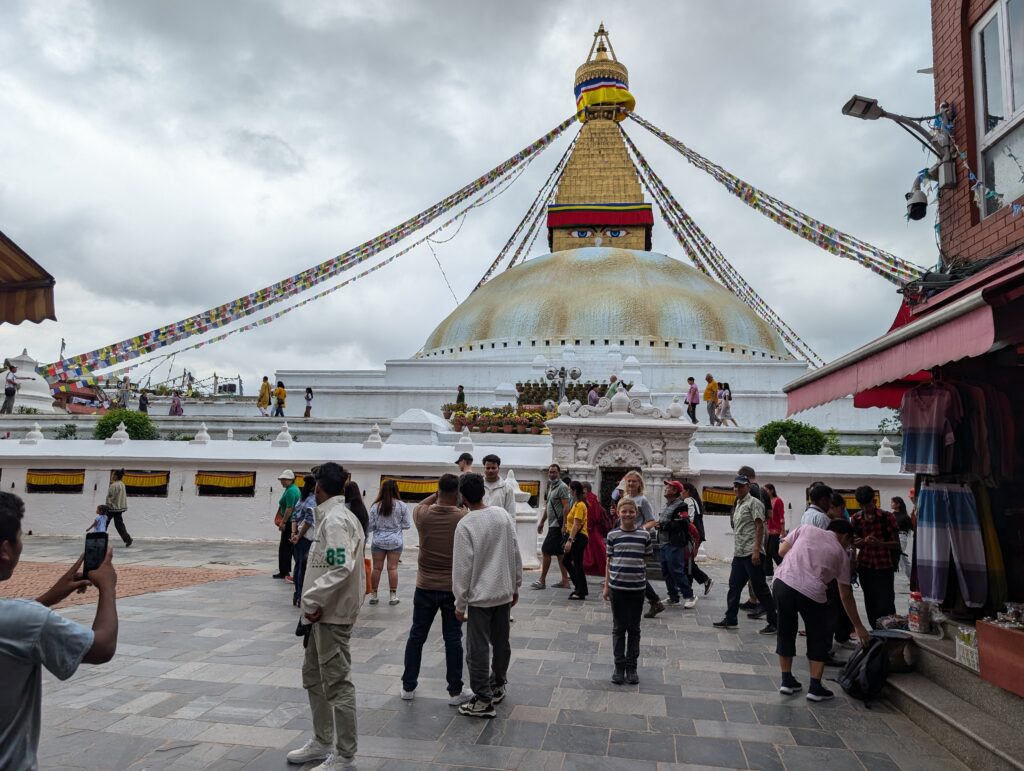

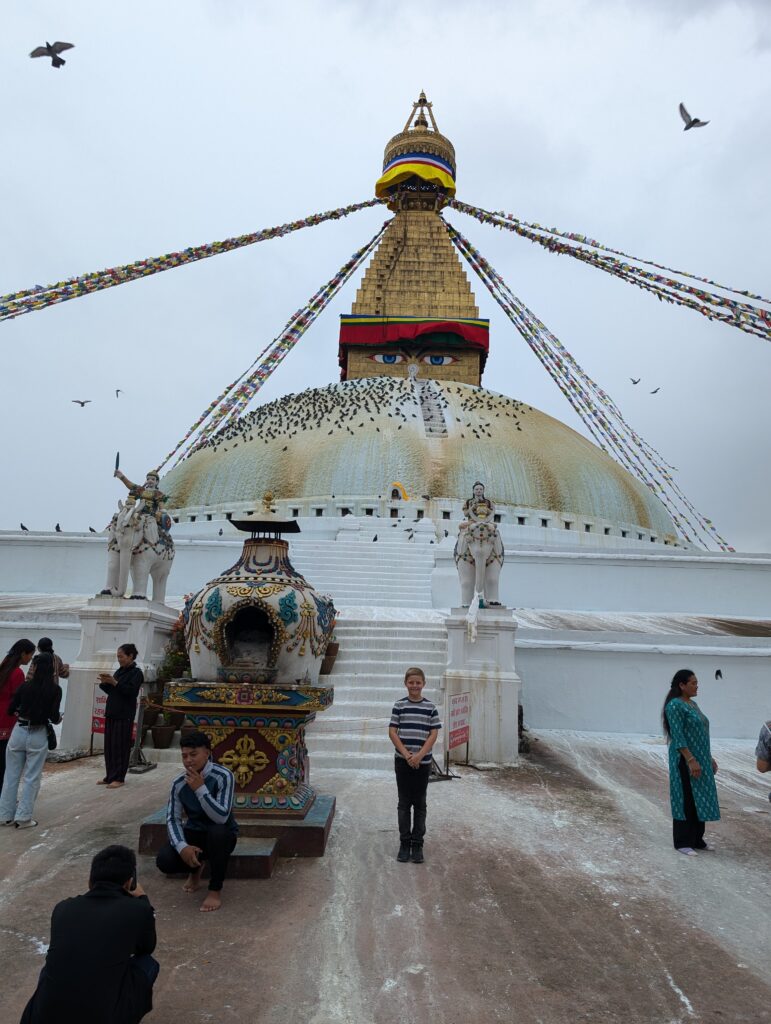
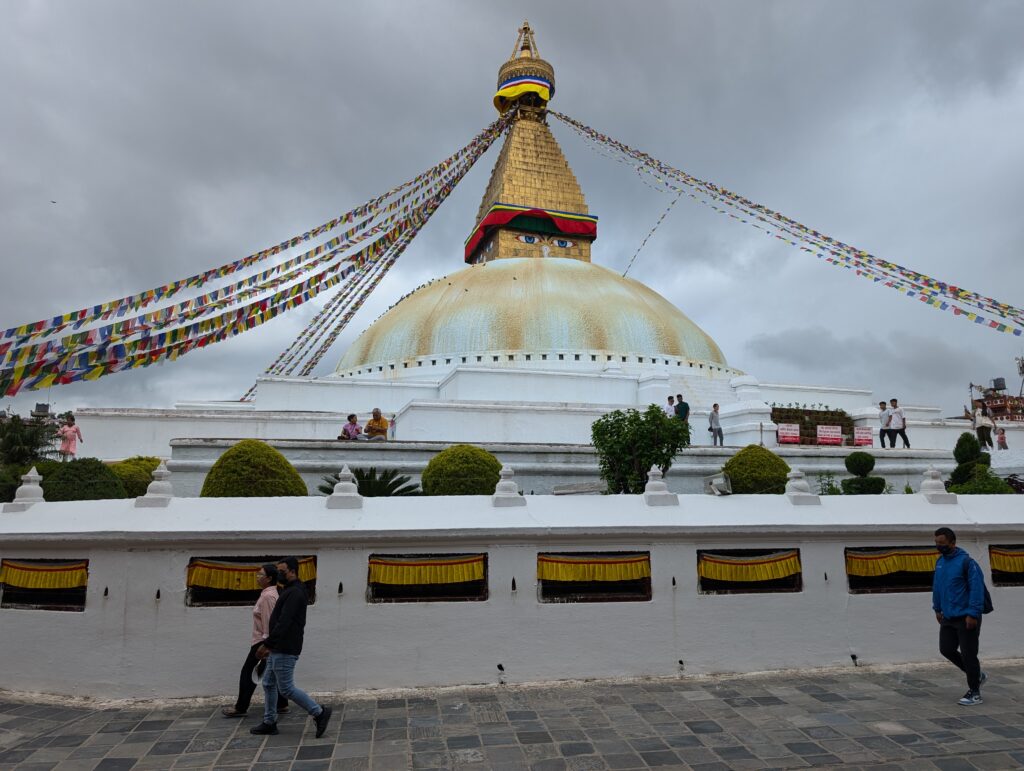
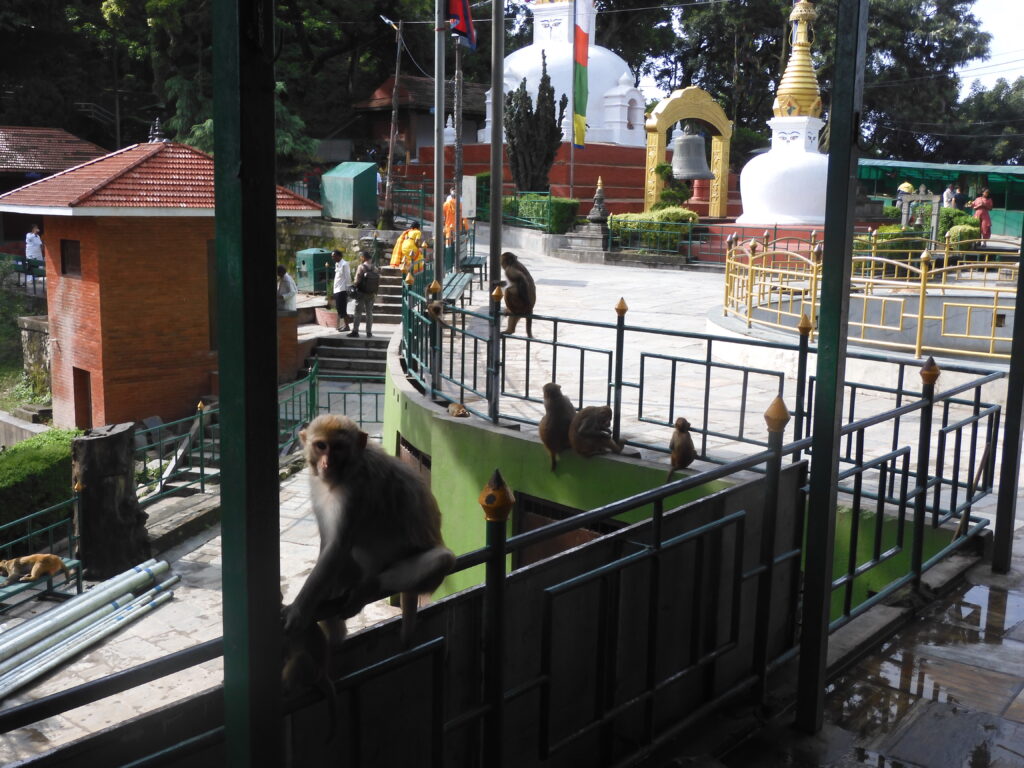
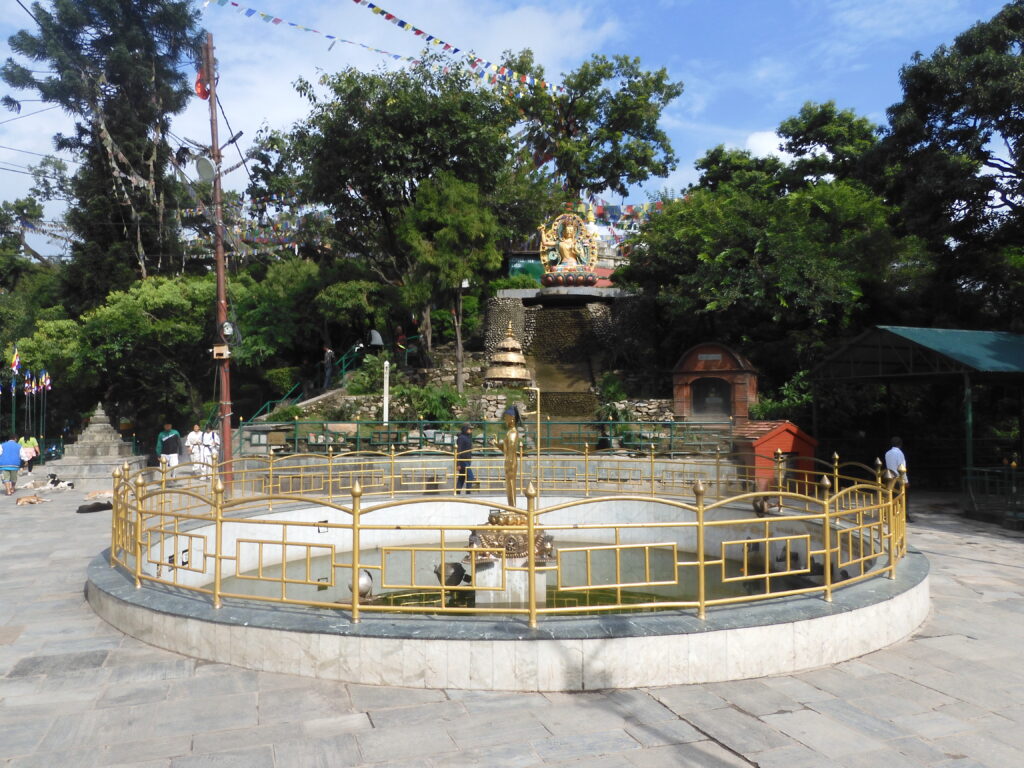
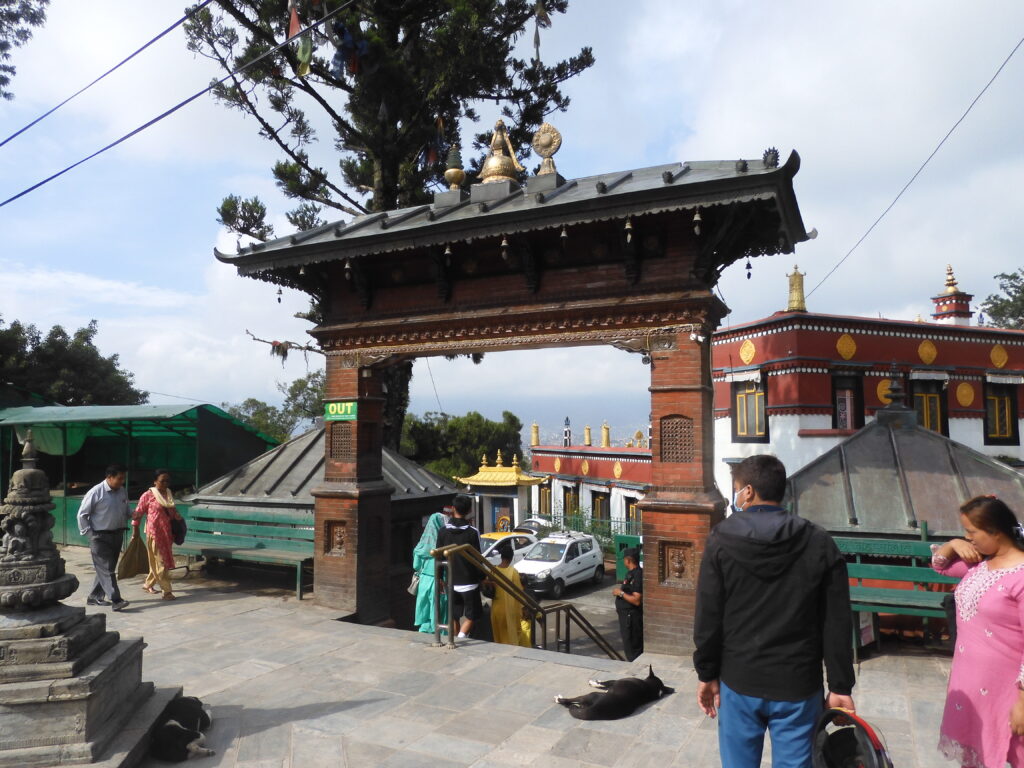

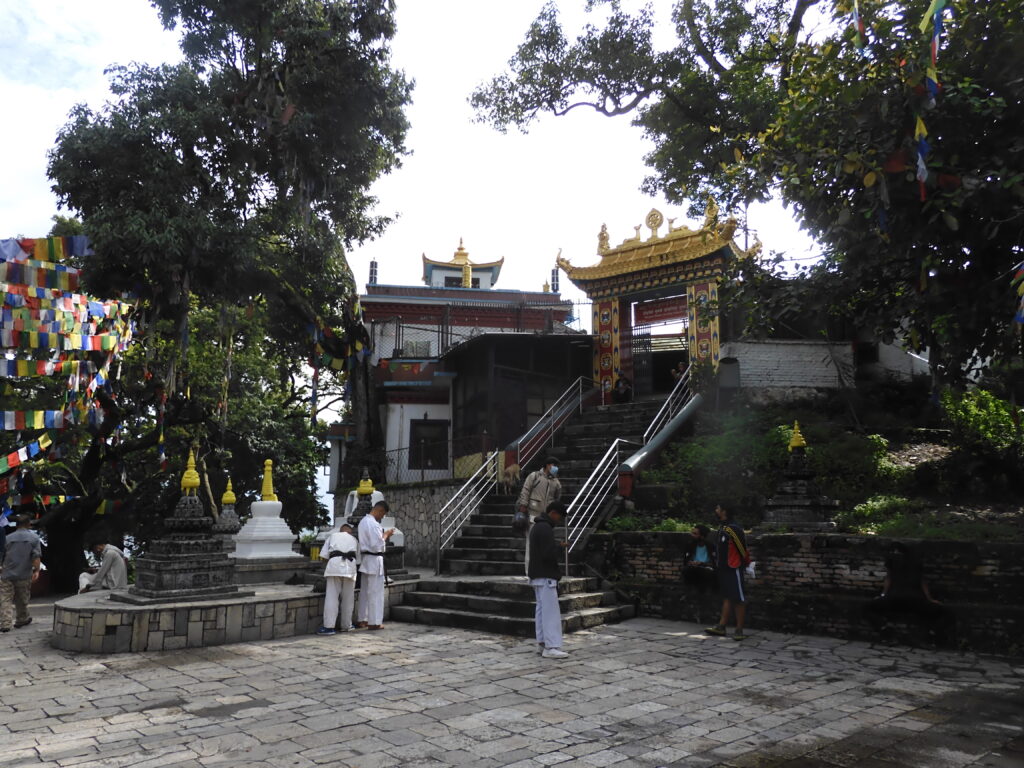


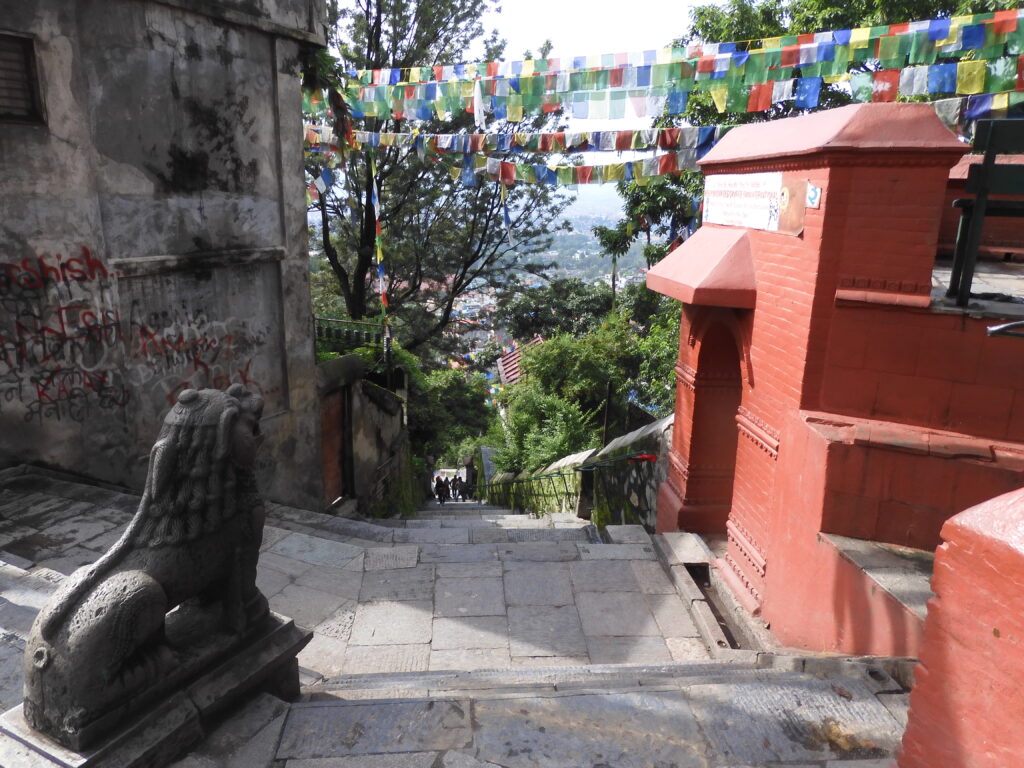
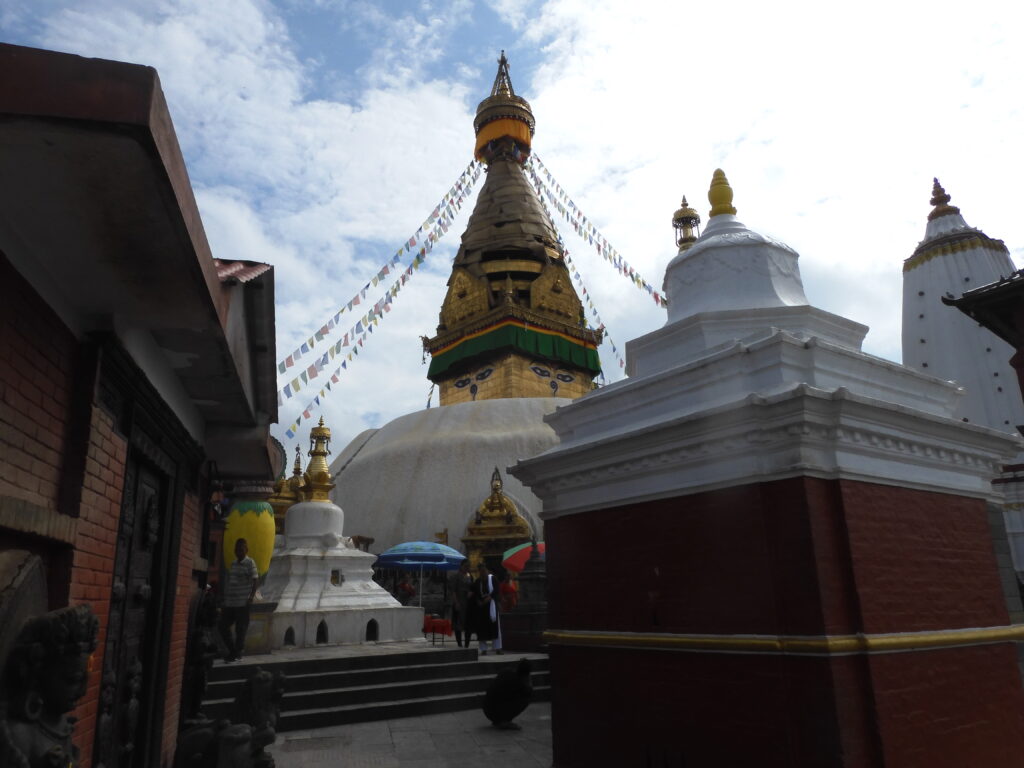
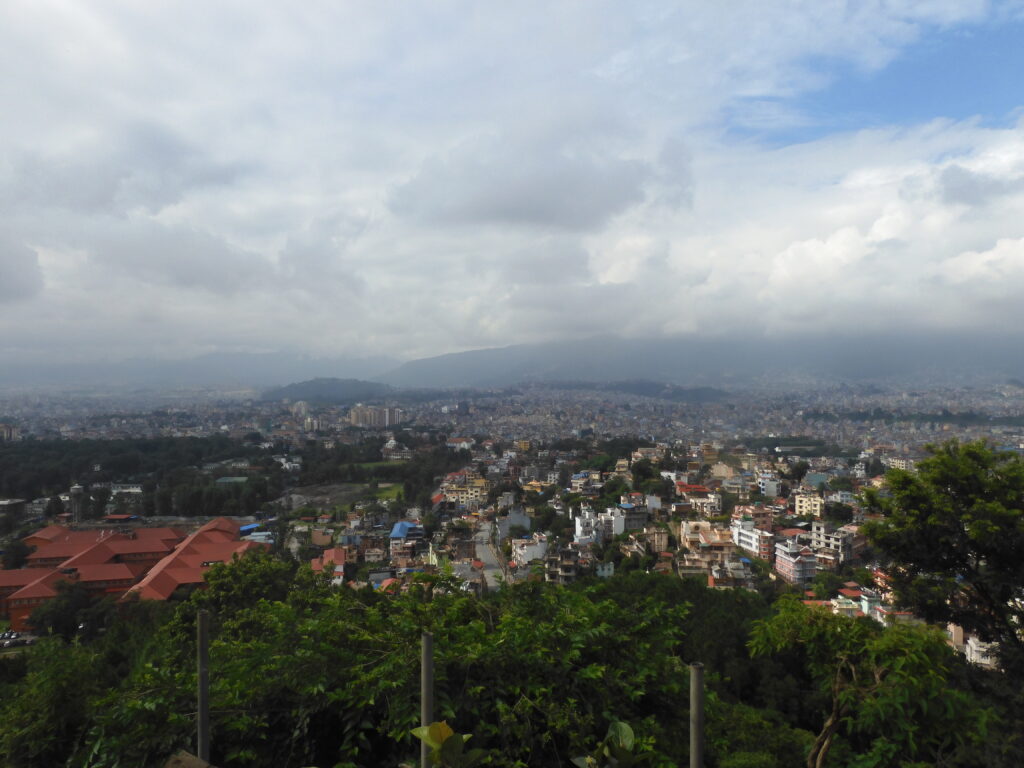
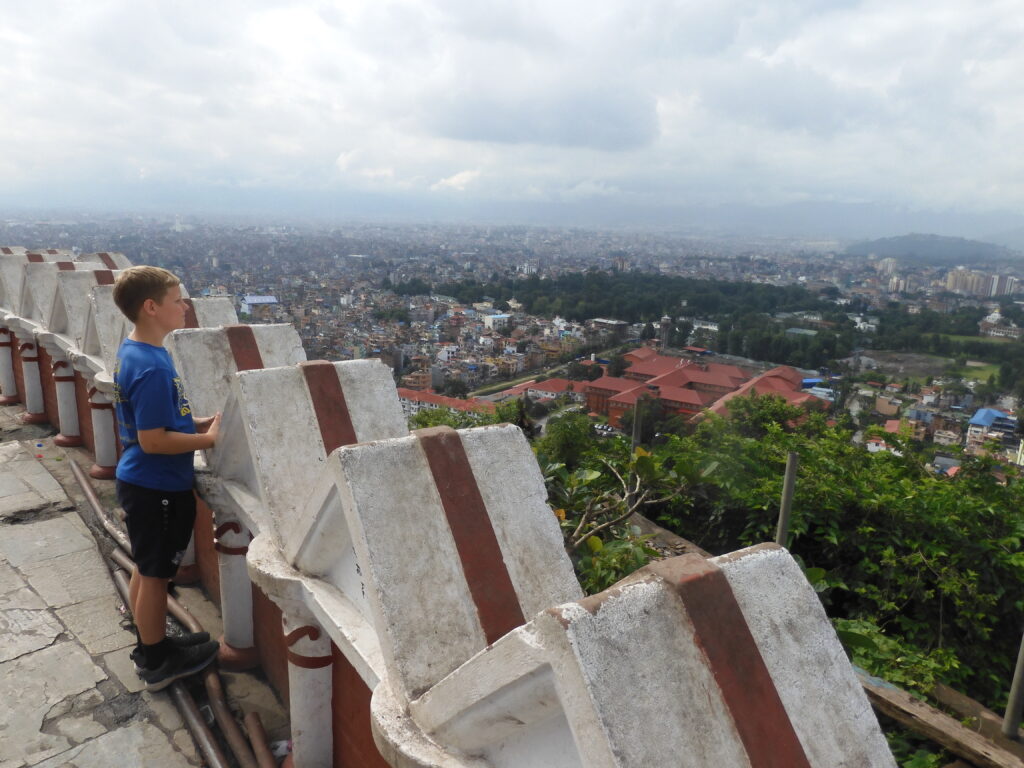
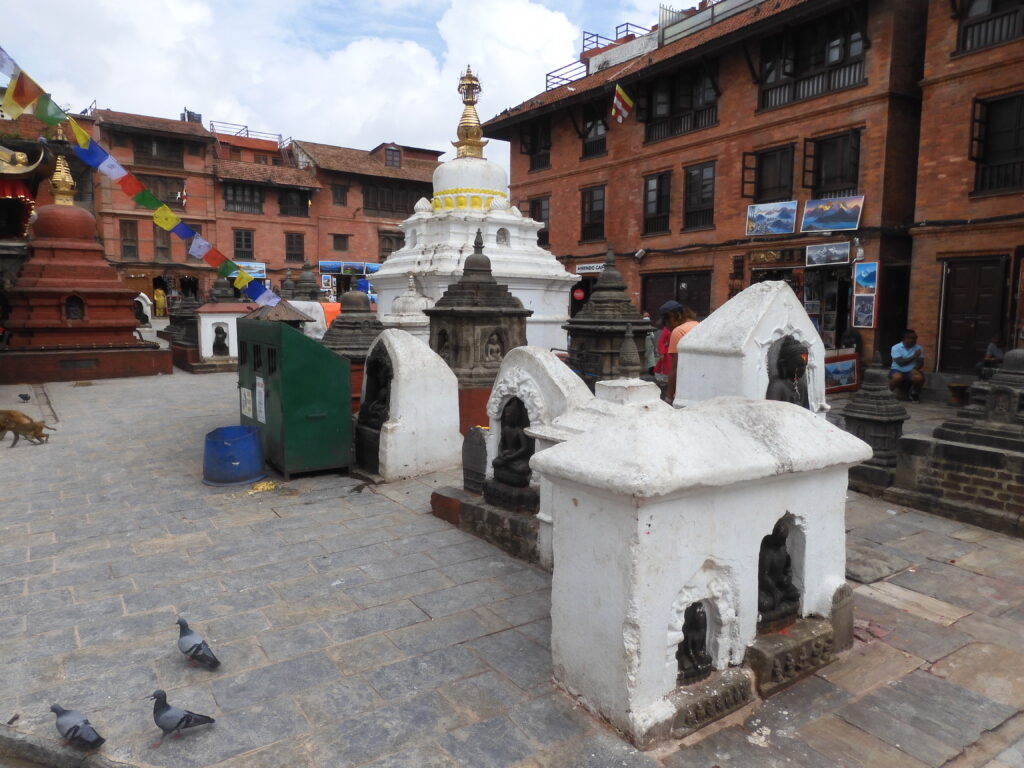
Even more than in other Asian countries, Nepal attempts to take advantage of foreign tourism by charging non-Nepalis substantially more than locals to see things they see as uniquely part of the Nepal tourist experience. Several of the large temples, and also this historical square are free to locals, or adherents of the religion the religious buildings serve. They tend to have a moderate price for non-Indian or Nepali tourists. Interestingly, they don’t ask for passports to determine if you should pay. They just look at you. Since many of these sites are open access, they just have a sort of kiosk near walkways that lead toward the site. Bardur Square, for example, is more like a neighborhood. So along the different streets, there will be a booth on the side that everyone just walks past. Foreign tourists are expected to walk up and ask for information at which point they’ll be charged. On more than one occasion, we saw white people chased down by guards as they walked in. One guy just said he was walking down the street, not visiting the square, but they were still on him to pay. I don’t think most people think of this, but certainly, many of the people who could aesthetically pass as Nepalis are actually Asian tourists that just aren’t asked to pay because they don’t look different.
We never balked at this, and just paid our fees. The ticket takers were usually polite and helpful, and generally did not ask for money for Caleb even though he technically should have been charged an adult entry. Imagine something like this taking place in America, though, people being overtly charged an entry or not based on whether or not they look different.
Kathmandu’s Bardur square has been declared a world heritage site due to its historical architecture and many very old buildings. As with many other historical sites in Nepal, the exact origins of the use of this site aren’t known. The best they can do is to tell you when the first mention of the place occurs in historical accounts. Most of the buildings of course have been renovated or rebuilt since, but are still very old. As with other temple sites, there are things going on everywhere, and the atmosphere seems as chaotic as the physical layout of the buildings. Kathmandu’s Bardur Square also has a museum with a decent overall history of Nepal. We went to this first, since it closed first. It offered a fair, basic account of the development of Nepal that differed in the ways previously mentioned from the Royal Palace account.
The next event we observed in the square was the appearance of an actual goddess. A preteen girl is selected as the physical representation of the goddess Kumari. She presents herself periodically for an hour in the afternoon. People congregate in her house and wait for her to show herself in an upstairs window. You are allowed to photograph the building, but they canvas the area looking for photo equipment before she shows herself. We were also given instructions on how to greet her and told to bow and place hands in front of our chest, which is pretty much how you greet people in Nepal anyway. So they weren’t actually asking us to genuflect or something sacrilegious. I just stood and watched, anyway.
A few minutes after the designated beginning of the appearance window, a handler came out to ensure with the crew on the ground floor that no one had photography equipment. This was checked meticulously. The procedure was repeated twice more, before a little girl in a yellow dress appeared at the upstairs window. She looked down at us – sort of. She didn’t smile. She didn’t wave. She just stood there looking aloof for a couple of minutes, and then left. I couldn’t tell if she was just too much a goddess to be bothered by the presence of us common folk, or if she had just tired of this daily routine of parading herself out before strange tourists. Either way, it made me smirk a bit. A living goddess…
For most of the remaining time, we walked around the square, snapping photos and just soaking in the ambiance of the numerous ancient temples, those lighting incense and making offerings at altars, and the general flow of hippies, Asian tourists, and just a huge diversity of people ambling through the square. In front of one of the temples, a group of girls in green dresses fringed with gold repeatedly performed a section of a choreographed dance in front of a light reflector, as if they were filming a clip for a movie or something. I never figured out what this was about, but they drew quite a crowd.
After we had our fill of people watching in the square, Caleb and I walked back toward Asan Tole, a disorganized outdoor marketplace in Thamel. There are shops selling just about anything you could imagine, but the emphasis was on food items, so far as I could tell. There were chicken corpses, baked goods, bags of ingredients and spices. I could not identify many of the items for sale, and most of the vendors did not speak any English. I tried to get passers by to interpret on a couple of occasions, but I didn’t get all that far. Eventually, I decided to try some things I thought were bread balls. Through an interpreter I asked what they were, and all I got out of the answer was that it had something to do with molasses. Molasses flavored bread balls sounded delicious, so I bought a bag. Once we were back in the room, I learned that I had just bought a giant bag of… straight molasses! I bit into one hard ball, and it was quite sweet. Stephanie could have used the stuff as an ingredient, I am sure. I had no idea what I was going to do with so many pounds of molasses on this trip, however. I certainly wasn’t going to carry it halfway back around the world, and I wasn’t going to eat the molasses by itself. I nibbled a little for the remaining day or so we were in Kathmandu whenever I needed to add some sweetness to something. But I ended up leaving it in the room, for lack of a practical way to transport the stuff home.
Our flight from Kathmandu to Bangkok did not leave until after 6:00 p.m. Saturday, so we had a lot of the day to kill. Our hotel proprietors were kind enough to let us stay in our room until about 1:30, so we spent a rainy morning writing and working. Once our time was up, we caught a cab using our handy ride sharing app and headed to Caleb’s choice, the Nepal Aviation Museum. This consisted of a single Airbus 330 that had been marooned in Nepal after a runway excursion. A donor provided enough money to have the entire fuselage converted into a rudimentary museum. There were a few science demonstrations outside and there was a small former Nepali helicopter, too. But really, the museum was just an Airbus with some pictures inside. It was kind of cool, though, and we enjoyed killing an hour there before heading into the airport itself.
We had a nice dinner in the airport, where I finally got some lamb that was meat instead of gristle and sinew – though we paid dearly for it. Then we boarded our plane and were whisked away, over the top of Myanmar and into Thailand where our former exchange student, Vun would be waiting to show us his home country.

